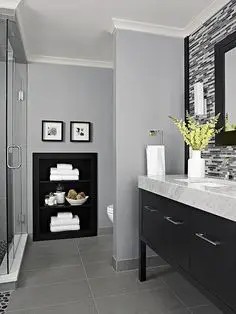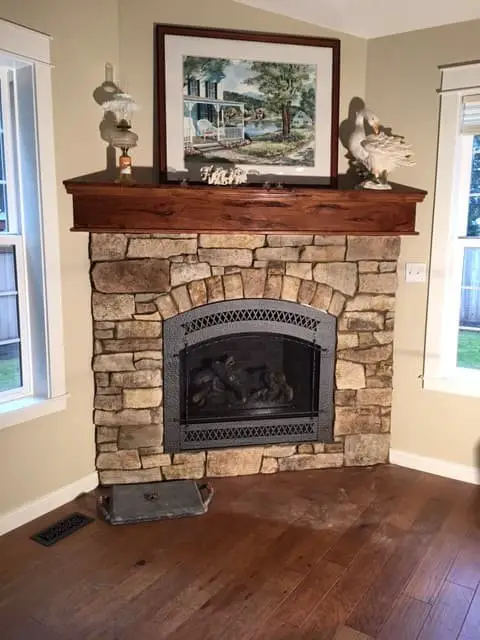9 Different Types Of Insulation For Your House (Buying Guide)
When it comes to effective home insulation, several factors come into play. The type of insulation you choose and the recommended R-values for your area are crucial considerations. With numerous insulation options available, including blanket insulation, floor insulation boards, fiber insulators, structural insulated panels (SIPs), and insulating concrete forms (ICFs), it’s essential to select the right one for your needs.
If you opt for a professional installation, ensure that the contractor is certified and experienced in working with your desired product. Before making a decision, acquire estimates from multiple contractors based on your preferred R-value, and inquire about their air-sealing prices as this can impact the overall cost.
On the other hand, if you decide to install the insulation yourself, carefully follow the manufacturer’s instructions and consider safety precautions, building codes, and fire policies. Before diving into the different types of insulation, it’s essential to understand the key factors to consider when making your selection: R-value, flammability, soundproofing, and allergens.
Factors to look into when choosing an insulation type
When it comes to choosing the right insulation for your home, the decision is just as crucial as selecting new furniture or decorations. Insulation not only boosts comfort levels within your house but also helps slash energy bills, freeing up a significant portion of your budget from unnecessary expenses. Each type of insulation boasts unique characteristics, including R-value, flammability, soundproofing capabilities, and allergen concerns.
As you weigh the pros and cons of each option, consider these factors in addition to installation methods and costs.
R-value
When it comes to controlling in-house temperatures and reducing energy bills, installing insulators in your home is a crucial step. The key here lies in the R-value, which measures an insulation material’s resistance to heat flow. In essence, the higher the R-value, the lower the costs you’ll incur to maintain optimal temperatures.
Some insulation types boast impressive R-values, with the USA Premium Foam standing out for its exceptional performance – boasting a whopping 35% increase over other materials.
Flammability
It’s unlikely that homeowners expect a sudden fire outbreak at their property. However, it’s crucial to consider the potential risks associated with certain insulation choices. Despite the protective measures provided by insulation, highly flammable materials can still pose significant threats. To minimize this risk, opting for less-flammable insulation types and materials is advisable.
Even if some insulation materials have non-flammable facings, others like cellulose can quickly ignite if not properly treated. A thoughtful approach to insulation selection can significantly contribute to maintaining a fire-safe home.
Soundproofing
Whether you’re tired of being bombarded by traffic sounds or frustrated with your neighbor’s dog barking nonstop, a well-insulated home can be a game-changer. While insulation is often touted for its ability to lower energy costs and regulate indoor temperatures, it also has a lesser-known benefit: soundproofing. Specifically, dense foams like injected or poured foam can significantly reduce external noise from entering your home.
Allergens
While certain materials like fiberglass, mineral wool (comprising rock and slag), and cellulose may not be considered as popular or trendy options for various applications, they can still cause severe health issues for individuals who are allergic to them. This poses a significant risk to those who use these materials on a regular basis, as they may inadvertently expose themselves to allergens that can trigger adverse reactions.
Different Types Of Insulation
Concrete Block Insulation
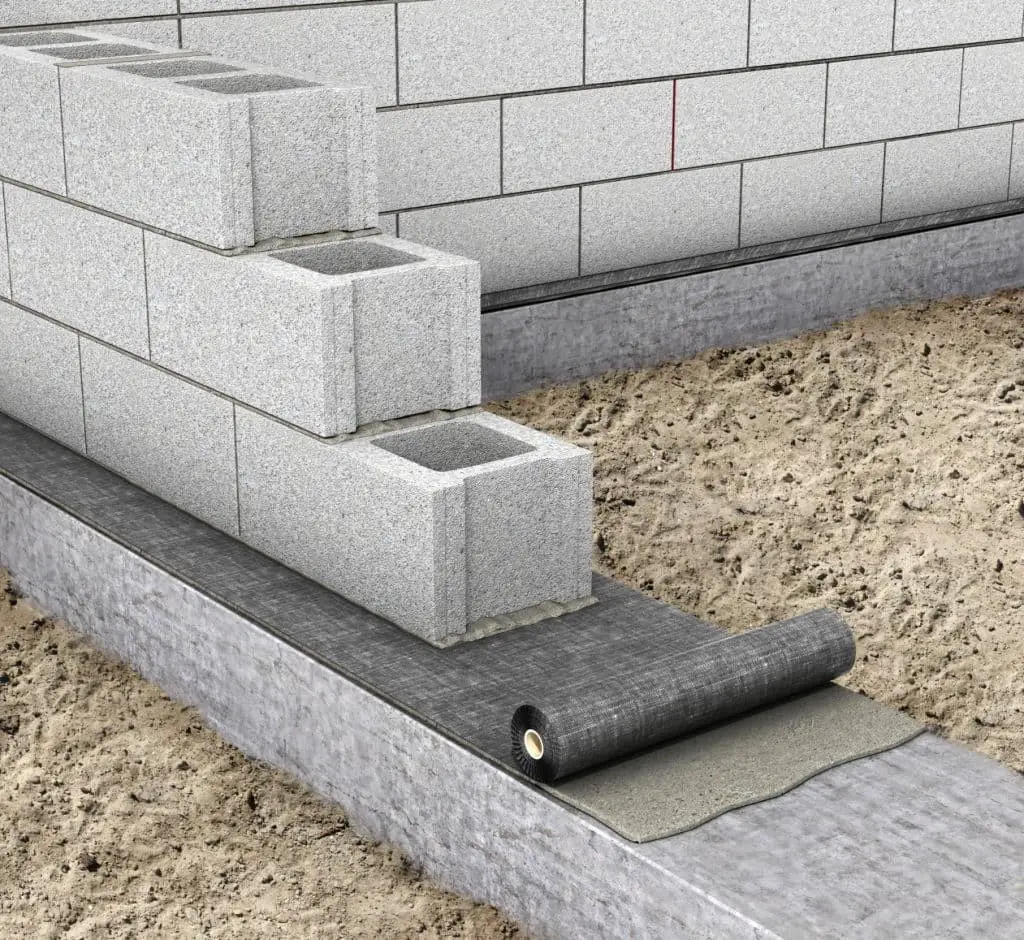
Insulating concrete blocks for foundations and walls offers versatile options. One method involves replacing the cores with insulation to boost the R-value of the wall, a viable approach when steel and concrete are not structurally filled. In contrast, applying insulators directly to block surfaces, whether inside or outside, is a more effective strategy. Placing the insulator on the exterior has added benefits, as it controls indoor temperatures.
Modern manufacturers have incorporated polystyrene beads and rigid foam inserts into concrete blocks for enhanced insulation. Autoclaved Aerated Concrete (AAC) and Autoclaved Cellular Concrete (ACC), used in Europe since the 1940s, boast an impressive R-value ten times higher than standard concrete. Comprising up to 80% air, these types of concrete are ideal for insulation, although they require protection from moisture due to water absorption.
Surprisingly lightweight and easy to shape with common construction tools, AAC and ACC blocks can be effortlessly sawed and nailed. Pre-formed units utilize high-silica sand and fly ash, respectively, with the latter being a waste product from electric power plants burning coal. Autoclaved concrete types have recently been introduced to the US market. Hollow-core units, made by mixing concrete and wood chunks, offer another insulation option.
Dry-stacked without mortar or steel filling, these units are prone to moisture and insect interference effects, however. For new construction or extensive renovations, insulating concrete blocks are a viable choice. Existing homes can benefit from insulating the blocks from within. Foam boards in concrete insulation can cover the inside of an existing building or the outside of a new home, while air can be incorporated into the concrete mixture to elevate R-values.
Ultimately, the right approach depends on specific circumstances and requirements.
Blanket Insulation
Blanket insulation, also known as batt and roll insulation, offers a convenient and widely used solution for insulating buildings. The versatility of these products lies in their ability to be bent and molded into various shapes, with fiberglass being the most common material used. However, other natural fibers like wool from sheep and cotton, mineral wool (rock and slag), or plastic fiber materials can also be used.
Pre-designed to fit standard spacings of wall studs, roof beams, and floor joists, batts and rolls are available in various sizes and R-values to suit different applications. For instance, for 2-inch by 4-inch and 2-inch by 6-inch walls, suitable R-13 or R-15, and R-19 or R-21 batts can be used, respectively. Continuous rolls can also be purchased, allowing for cutting and trimming to fit specific spaces.
When selecting insulation materials, it is essential to consider whether facings are required. Facings are coverings, typically made of vinyl or kraft paper, designed to act as a barrier against vapour or air. In some cases, the insulation may need to be left exposed, which may require the use of unique flame-resilient batts for areas like basement walls. The lack of facing can make installation more challenging, but it also simplifies the fastening process.
It is recommended to consult with the manufacturer, a local building expert, or both to determine the ideal thickness, R-value, and price of the batts and rolls required, especially when undertaking the installation oneself. Blanket insulation is particularly well-suited for unfinished walls, foundation walls, floors, and ceilings.
Insulating concrete forms
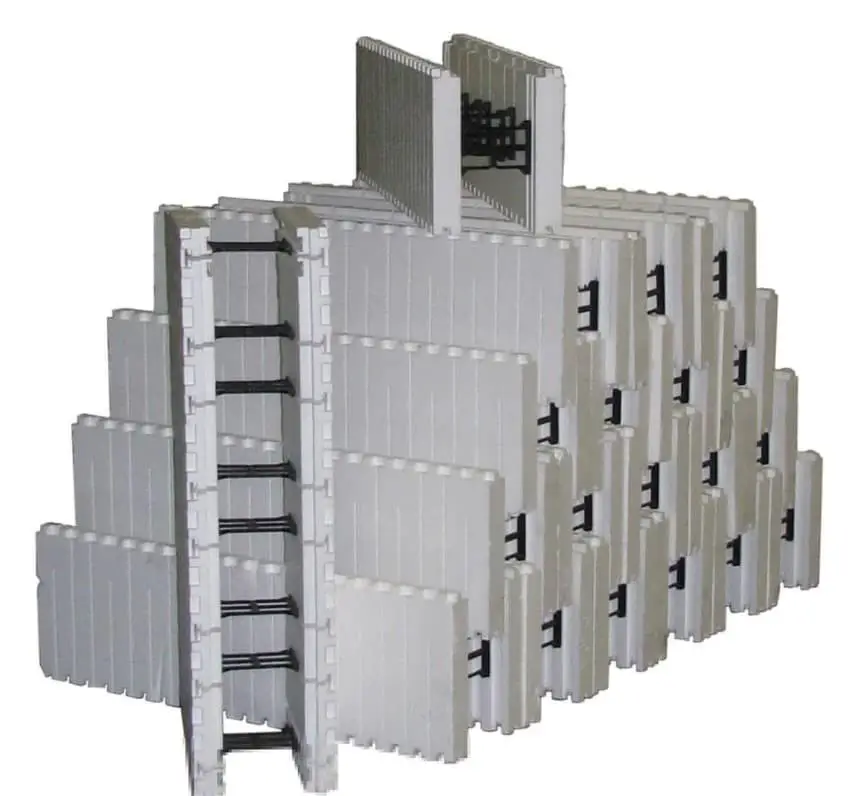
To effectively insulate poured concrete walls, Insulating Concrete Forms (ICFs) are the way to go. These innovative materials provide an impressive R-20 thermal resistance, becoming an integral part of the assembled wall. While ICF-insulated homes may resemble traditional timber houses from the outside, they boast poured concrete construction on the inside.
The ICF system consists of joint foam boards or hollow-core blocks, which are secured together using plastic ties to ensure airtight insulation prior to pouring the concrete. For added strength, steel rebar can be incorporated into the walls just before the concrete is poured. In the case of foam blocks, reinforcing steel is inserted into the hollow cores for unparalleled structural integrity.
Manufacturers have addressed concerns about water and insect infiltration by developing waterproof blocks treated with insecticides. However, attempting to insulate these materials yourself can be a daunting task, making it advisable to leave the job to a qualified professional. ICFs are suitable for both unfinished walls and new construction projects, offering superior thermal resistance as an in-built insulator.
Radiant Barriers and Reflective insulation systems
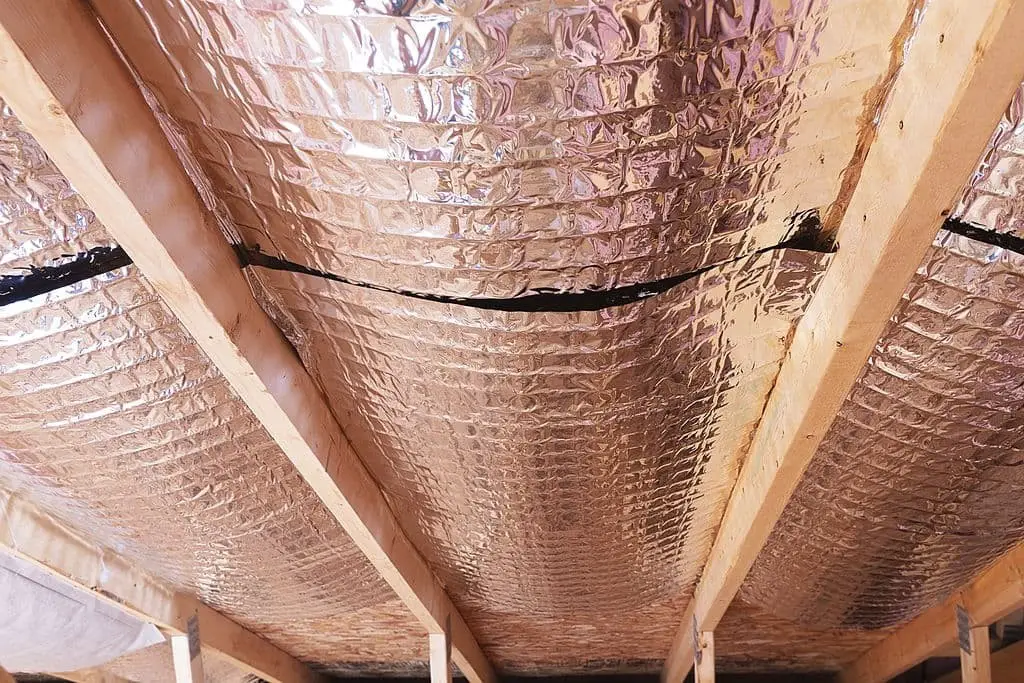
Designed to deflect thermal radiation and minimize heat transfer through conduction and convection, radiant barrier insulation systems are specifically designed for attics that experience excessive heating during hot summer months. By reflecting heat away from surfaces using reflective materials like aluminum foils, coupled with insulating materials such as cardboard, kraft paper, or plastic film, these systems help reduce cooling expenses.
When radiant heat, much like light, travels in a straight line and encounters an absorbing surface, it causes the surface to heat up. This is particularly problematic for roofs that can quickly become scorching hot under the intense summer sun. As the heat travels through roofing materials via conduction, it soon warms the underside of the roof. In turn, cooler areas of the attic gain heat through radiation from the heated roof underside.
Air ducts and the attic floor are not immune to this process. A radiant barrier can be a valuable addition if you want to prevent this radiation and reduce heat flow through the air space onto other parts of the attic. Research has shown that an effective radiant barrier can help homeowners in hot or warm climates save up to 10% on their home cooling costs. In some cases, this may even allow for the installation of a smaller or cheaper air conditioning system.
The best part is that this insulation type can be installed DIY-style, although its effectiveness does depend on factors such as foil numbers and allowed spacings.
Loose-fill and blown-in insulation
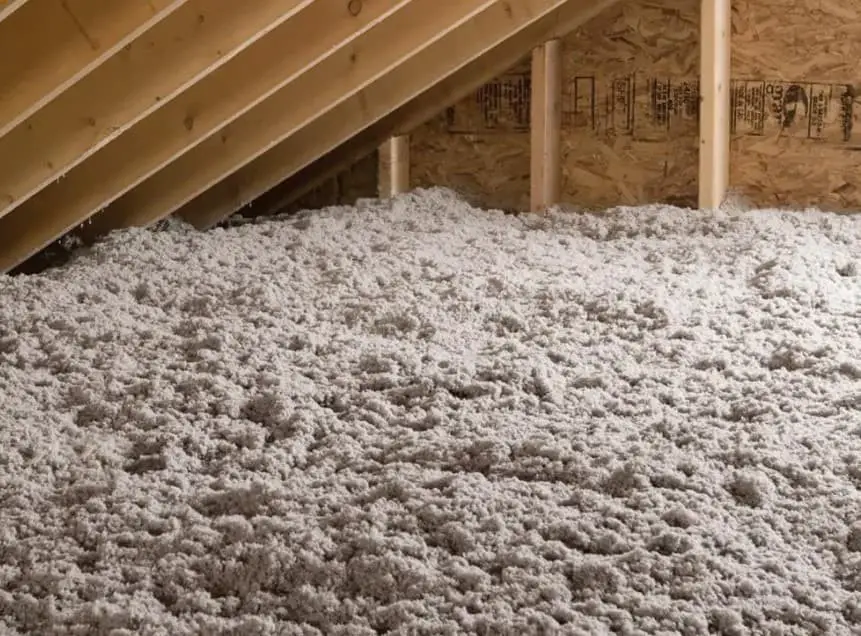
Shop at Home Depot for a wide range of loose-fill and blown-in insulation options that cater to various needs. These versatile insulators are ideal for retrofitting existing structures, as they can be applied to walls and other areas without disrupting the original architecture. The materials used in loose-fill insulation are often recycled waste products, such as fiberglass, cellulose, and mineral wool.
Cellulose is derived from recycled newspaper, while mineral wool originates from industrial material recycling. Fiberglass, on the other hand, comprises up to 60% recycled glass. Apart from these common materials, vermiculite, perlite, and polystyrene beads are less frequently used for insulation purposes. Loose-fill insulation products are typically poured into spaces, whereas cellulose, fiberglass, and mineral wool are blown in using specialized equipment.
For efficient installation, it’s recommended to hire a certified professional to achieve the desired R-values by blowing in the correct density levels. Manufacturers provide detailed information on their product labels and fact sheets, including R-value, thickness, and coverage area. This data enables you to make an informed decision about which insulation type suits your needs best, given the varying R-values across different forms of insulation.
Installation typically involves two installers working together: one feeds the material through a tube attached to an industrial blower, while the other monitors the opposite end where the material is being poured. The entire process usually takes only a few hours, resulting in well-insulated spaces. However, improper installation can lead to reduced insulator effectiveness due to air pockets formed during initial installation.
Conversely, blown-in insulation that’s installed correctly can increase thermal insulation by up to 22%.
Rigid Fiberboard Insulation
Amazon offers a wide range of products for purchase. When it comes to insulating homes, one popular option is rigid fiberboard insulation or fibrous board insulation. These products are designed to withstand extreme temperatures and are commonly used in home air ducts. The thickness of these boards can vary from 1 inch to 2.5 inches, providing a high level of effectiveness with each board capable of offering up to R-4 insulation.
To install the rigid fiberboards, the outer parts of the duct can be insulated using impaled pins backed by speed clips or washers. Manufactured from inorganic glass fibers bonded with resin, these boards are available with either a faced or unfaced design. Faced boards feature an additional layer that acts as a barrier to air and vapor. Regardless of the type chosen, a suitable finish can be achieved using insulating cement, all-weather mastic, or canvas.
When it comes to sealed joints on faced boards, pressure-resistant tape is recommended. One notable advantage of rigid fiberboards is their resistance to rot and increased structural wall strength. The lightweight nature of these boards also allows them to fit into tight spaces, providing effective insulation despite their compact size. While termites and ants may attempt to burrow into the board, this is a characteristic shared by some other materials.
Although more expensive than other insulation options, rigid fiberboard insulation offers a reliable solution for those seeking high-performance insulation.
Sprayed-foam and foam-in-place insulation
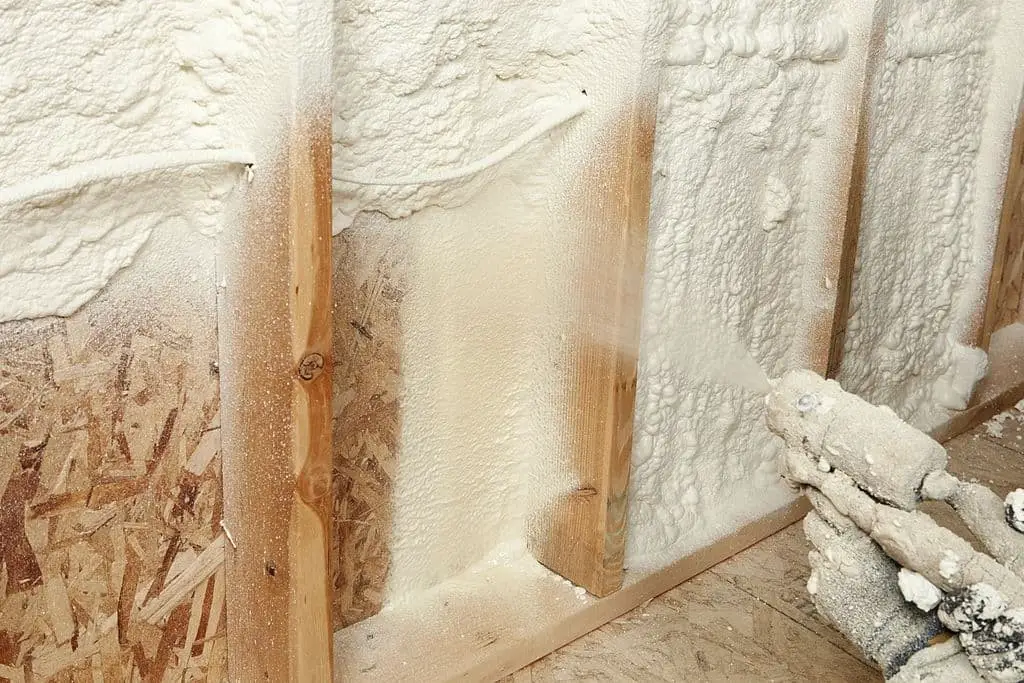
Liquid foam insulation materials outperform batt insulation counterparts of equal thickness due to their higher R-value. These innovative materials can be applied through various methods – foaming-in-place, injection, or spraying – allowing for precise coverage during installation. This thermal insulation solution can be utilized within walls, attics, and subfloor spaces to achieve desired thermal performance, including minimizing air leaks.
Small, pressure-filled cans are provided for foam-in-place insulation to seal electrical and plumbing areas, as well as cracks on the wall. In a significant shift towards environmental sustainability, CFCs and HCFCs-based foaming agents have been phased out in recent times. Instead, polyurethane remains the primary material used for foam-in-place insulation, which comes in two distinct forms: closed-cell and open-cell.
Open-cell foam features low-density, air-filled cells with a spongy texture, whereas closed-cell foam is characterized by gas-filled cells that facilitate expansion into hard-to-reach areas. The type of insulation you choose ultimately depends on your budget and specific needs. Closed-cell insulation offers superior thermal performance, is denser, and more effective at preventing air and moisture leaks – making it a premium option.
On the other hand, open-cell foam is a more affordable choice due to its lower weight and limited applicability below ground level, where it can absorb moisture. However, installation of liquid foam insulators requires specialized equipment that only qualified professionals are trained to operate. Other materials used in this application include cementitious, phenolic, icynene, tripolymer, and polyisocyanurate.
Tripolymer stands out for its unique fire resistance properties, air-leakage prevention capabilities, and water solubility feature.
Structural Insulated Panels
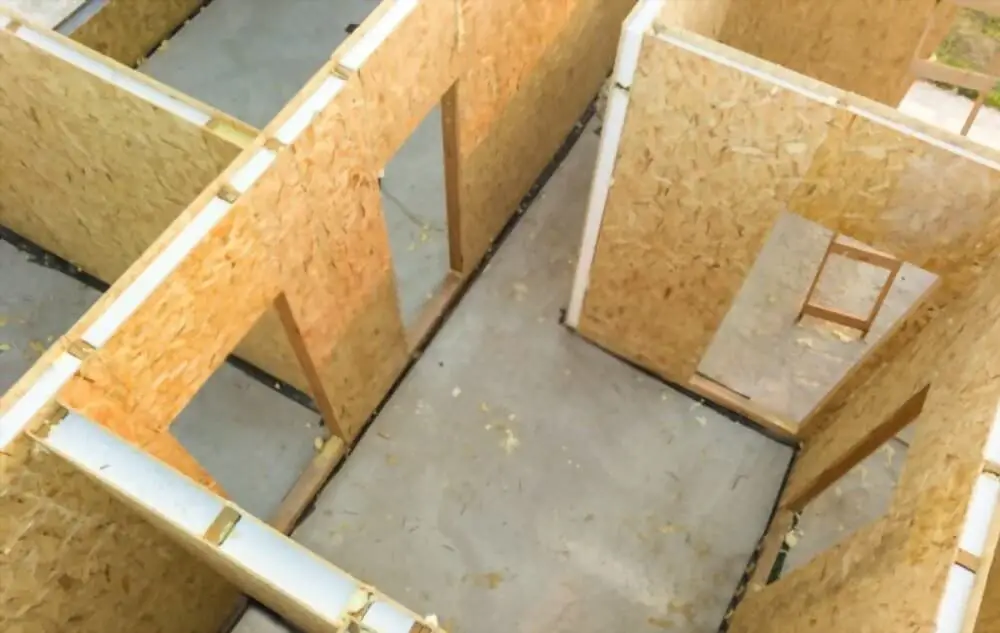
SIPs, or structural insulated panels, are pre-made construction materials that can significantly enhance energy efficiency, noise reduction, and overall comfort in buildings. With their superior prefabricated design, SIPs can offer up to 14% more energy savings compared to traditional insulation methods. The panels come in various sizes, with some requiring heavy machinery for transportation and installation, such as the large 8 feet by 24 feet boards.
To ensure optimal performance and longevity, SIPs must be properly manufactured, cured, glued, and pressed to ensure a smooth surface and square ends that can easily interconnect during installation. The common materials used in SIP production are polyisocyanurate and polystyrene foam. When transporting SIPs to job sites, manufacturers often provide shipping solutions to minimize disruptions.
With the help of experienced professionals who have worked with these panels before, it’s possible to construct a house relatively quickly while maintaining quality and adhering to building codes. To further enhance the safety and integrity of SIP buildings, manufacturers recommend using fire-resistant materials like those made from gypsum to protect the foam and facing in case of an emergency.
Additionally, measures can be taken to prevent insect or rodent infestations by applying insecticides before and after construction. Maintaining low humidity levels below 50% can also help deter unwanted pests. However, it’s crucial to ensure adequate ventilation in SIP buildings to maintain a safe and healthy environment. This may involve installing vents or other air circulation solutions to comply with building policies.
Finally, installing SIPs requires qualified professionals who can properly place the panels for optimal R-value performance.
Foam board or Rigid foam
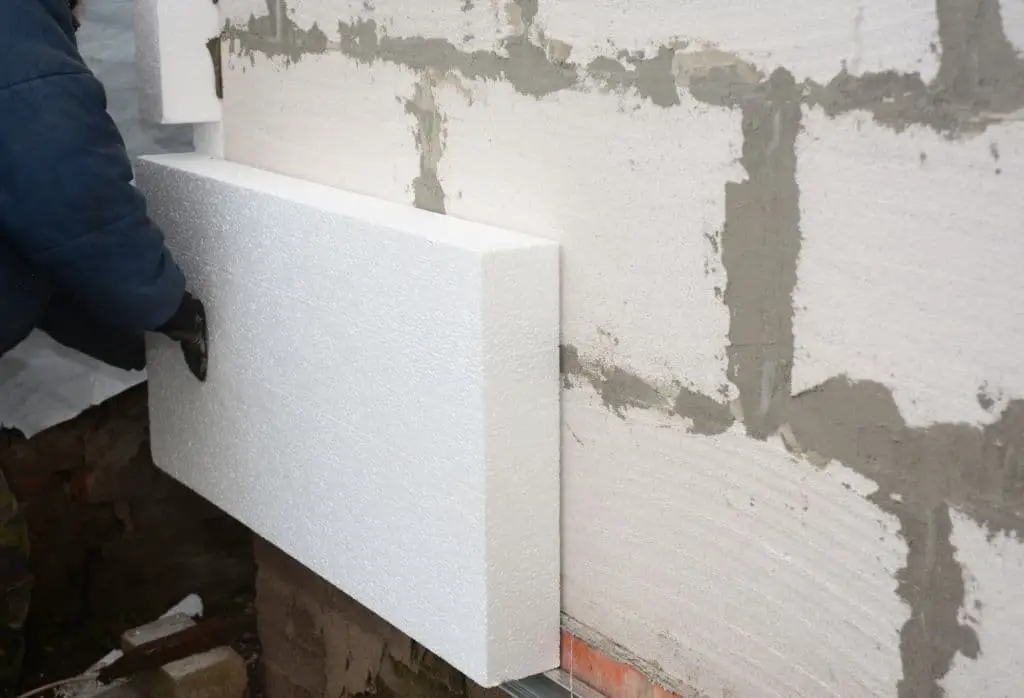
Rigid foam sheathing insulation is a highly versatile option that can be used in various parts of your house, including interior or exterior walls, basement walls, and even the attic hatch. This type of insulation prevents heat from conducting through wood and studs from the roof to cooler areas of the house, effectively reducing energy loss.
The materials commonly used for rigid foam insulation include polystyrene (both extruded and expanded), polyiso, and polyurethane, which offer an impressive R-value of 3-5 per inch. This increased insulation raises the overall wall insulation, helping to control indoor temperatures and reduce energy bills.
Furthermore, these boards are designed with fire retardants, allowing them to resist flames and provide a critical buffer in the event of a fire, ultimately helping to preserve lives and property.
Conclusion
Achieving control over energy bills is a significant privilege, with the right insulation material allowing for a reduction of more than 25% in overall energy costs. While some options may be pricier, the long-term benefits include lower bills and a higher level of comfort. Insulation offers advantages beyond thermal regulation, including soundproofing and enhanced quietness.
With the guidance of a certified professional and the selection of an insulation type boasting a high R-value, you’ll be well on your way to reaping the rewards. For book lovers and film enthusiasts, the ability to read or watch peacefully in a quiet environment is now possible right in the comfort of your own home, thanks to soundproof insulation.
Similarly, residents living in urban areas plagued by constant traffic noise can find solace in the peaceful ambiance afforded by well-insulated homes. The key is to choose the insulation that meets your needs, rather than simply wanting it. This approach will lead to a harmonious and peaceful environment, free from the unwanted side effects that often accompany poor insulation choices. For DIY enthusiasts, it’s essential to follow established procedures to ensure successful installation.
Related Posts
Starting a pool cleaning business requires strategic planning and effective execution. To streamline your operations, it’s essential to develop efficient deep cleaning hacks that can be applied to various settings. In this context, we’ll explore the art of speeding up your house cleaning routine using practical tips and tricks. Furthermore, selecting the right rain gear for the job is crucial, particularly when dealing with unpredictable weather conditions.
For those looking to transition into a disaster restoration specialist role, our comprehensive guide outlines the necessary steps to take. Additionally, identifying reliable home cleaning services requires research and due diligence.
In this draft, we’ll delve into these topics, providing readers with valuable insights to enhance their understanding of pool cleaning businesses, house cleaning routines, and the importance of choosing suitable rain gear and finding dependable restoration professionals.


